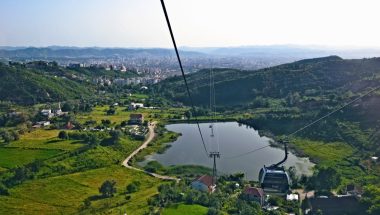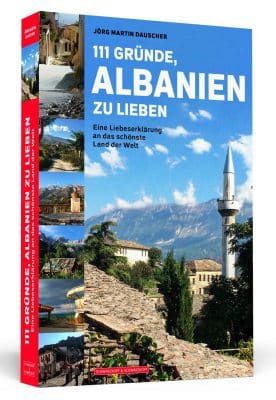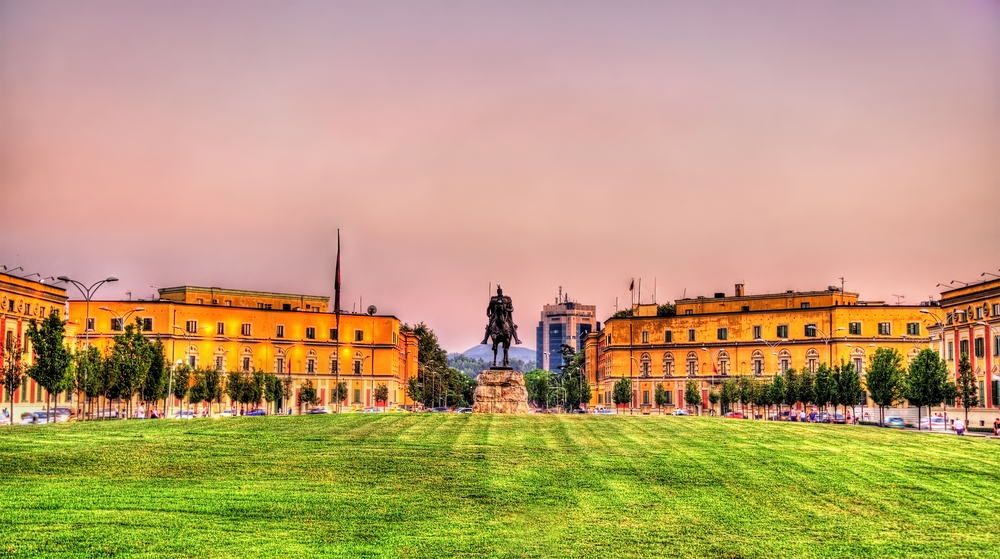Albania is known for its numerous natural treasures and is often referred to as the wild Balkans. But not only the fantastically wild landscapes and the Mediterranean climate are worth a trip, but also the capital Tirana, which is well worth seeing. The vibrant capital attracts not only with an interesting history, but also with a wide range of cultural offerings, numerous sights and the Dajti National Park.
Tirana’s green side

The metropolis, port and university city of Tirana also inspires with its location. Tirana’s local mountain Dajti rises in the east of the city and gives its name to the Dajti National Park. In the particularly charming mountain landscape, there are traces of prehistoric settlements, remains of numerous fortifications, deep river valleys and the surrounding mountains.
The mountain is also often referred to as the balcony of Tirana, because it offers a fabulously beautiful view of the capital of Albania, which lies at the foot of the mountain. If you don’t want to miss the view, but don’t feel like an arduous ascent, you can easily reach the local mountain from the eastern outskirts of Tirana by cable car. However, the summit of Dajti cannot be climbed, because it is still a military restricted area today. Summiteers can alternatively climb the Maje e Tujanit.
Around the turbulent capital there are also beautiful river valleys and idyllic lakes. Lake Tirana is very popular in the large park, which is located on the southern edge of the city center and was artificially created in 1956. However, Fakra Lake, Kashar Lake and Paskuqan Lake are also popular with locals and tourists.
 However, Albania has more to offer than just the capital Tirana. We therefore recommend Jörg Martin Dauscher’s declaration of love “111 reasons to love Albania”. Here you will find exciting and funny stories that are a pleasure to visit the Balkan country. It is best to order the book under the ISBN 978-3-86265-786-5 from your local bookseller
However, Albania has more to offer than just the capital Tirana. We therefore recommend Jörg Martin Dauscher’s declaration of love “111 reasons to love Albania”. Here you will find exciting and funny stories that are a pleasure to visit the Balkan country. It is best to order the book under the ISBN 978-3-86265-786-5 from your local bookseller
The sights of the charming port city of Tirana
Tirana is not only the political center of Albania, but also the cultural one. The area of today’s Tirana has been inhabited since the Paleolithic Age. Since then, today’s capital has experienced many ups and downs. Although the city has always played an important role thanks to its port, it was not until 1920 that it was designated as the capital. Today, Tirana is a big city and attracts visitors with the country’s largest museums, excellent art galleries and other cultural institutions such as the Palace of Culture, the State Opera and Ballet Theatre and the National Library. In particular, the National Historical Museum, the National Archaeological Museum and the National Art Gallery attract visitors from all over the world. But the botanical and zoological gardens of the metropolis are also extremely worth seeing. A visit to the Sky Tower is also a special experience, as there is a revolving restaurant here that offers a magnificent view of the city.
But there is also a lot to discover on a stroll through the city. Among other things, every visitor to Tirana should visit the equestrian statue in honor of Skanderbeg, a prince from the Albanian noble family of the Kastrioti. The equestrian statue can be found on the square of the same name. The prince became known for defending the Principality of Kastrioti against the Ottomans and is now considered an Albanian national hero who is revered throughout the country. Also worth seeing is the Et’hem Bey Mosque and, of course, the city’s landmark: a 35-metre-high tower built in 1830. Likewise, in Tirana there is the Monuemtal statue of the Mother of Albania, which every visitor to the city should have seen. Some stone arch bridges from the Ottoman period have also been preserved to this day, as well as castles and mosques. However, the most famous and impressive sight is the early Byzantine fortress Petrela. In addition, there are numerous city villas that are architecturally interesting and the Piramida, the pyramid-shaped building that once housed the Enver Hocha Museum. But in Tirana there are even the settlements, some of which were built illegally, with their prefabricated buildings, some of which were colorfully embellished by the artist and politician Edi Rama in a “painting action”.
Modern metropolis and forgotten traditions
Neighborhoods like Blloku stand for the modern and lively Tirana. This booming district is often referred to as the “playground of the young elite” and is characterised by boutiques, trendy restaurants, numerous cafés and bars. Tirana’s extreme growth in recent decades can be traced back to the rural exodus in Albania, as young people in particular are drawn to the capital to attend university and work here. While very old traditions are still maintained, especially in the mountain villages of Albania, they have long been forgotten in Tirana. Tirana has become a modern and cosmopolitan university city that offers excellent shopping opportunities, attractive cultural offerings and a varied nightlife. Albania’s capital presents itself as European and can certainly keep up with other metropolises.
The capital as a religious melting pot
The metropolis is also considered a religious melting pot, because the once Sunni-Islamic capital now has many inhabitants of other denominations and also many atheists who no longer belong to any religious community after the former communist rule. Tirana is the seat of the Grand Mufti of the Muslim community of Albania, but also the world centre of the Bektashi Order and the seat of the Catholic and Orthodox archbishops. A small Jewish community has also formed in the city and opened a synagogue, and communities of the Baha’i, the Ahmadiyya and the Jehovah’s Witnesses can also be found in the metropolis.
Culinary highlights in the capital
Albanian cuisine has a lot to offer, because it has been influenced by numerous nations and so Albanian cuisine is very Mediterranean and at the same time the oriental influences are unmistakable and the typical Balkan cuisine is also strongly represented. The Albanians are generally very hospitable and like to invite. Guests are more than well catered for here, as several dishes are usually served at once. The pita, which is prepared with a wide variety of fillings, is usually not to be missed.
But Trahana is also typical. Rice dishes with meat such as pilaf are just as much a part of Albanian cuisine as ayvar, cheese in all variations, flatbread and turshia (fried and then pickled vegetables). Soups and stews are also often served and there are also a wide variety of influences when it comes to desserts, as the spectrum ranges from baklava to pancakes. One of the most popular drinks is black tea, but mocha is also popular.


